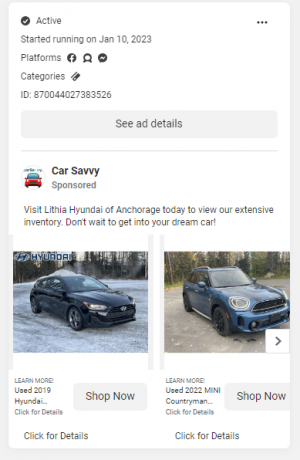I agree that consumers may be less inclined to click on an ad that is not from a well-known marketplace or the dealership itself (although I have no data to back that up - just my gut).
However, from the vendor's perspective, it is notoriously difficult to get advertising access to many dealerships' Facebook pages, so creating a fake page like this is an easy way to not deal with that headache and make it easier for them to scale and launch campaigns quickly.
Stellantis is notorious for this too because they require dealers to enroll monthly in BC-directed fund and heavy-up campaigns that often run for less than a month, so there's no time to spare (is there even enough time for the campaigns to properly optimize and perform well is a question for another day...)
In a perfect world, vendors should first ask and try to get access to a dealership page, and then only if that fails, resort to using a generic phantom page. But that opens up an entirely new can of worms that they are probably hoping to avoid - the dealer reaching out for help from their advertising agency, marketing manager, etc, who weren't in the loop of the dealer signing up for their service in the first place.
On a related note, many LotLinx clients (and OEM co-op programs) may be surprised to learn that a portion of the traffic LotLinx generates originates from Facebook automotive inventory ads, where clicks and VDP views can be had for as inexpensively as 10 cents.










